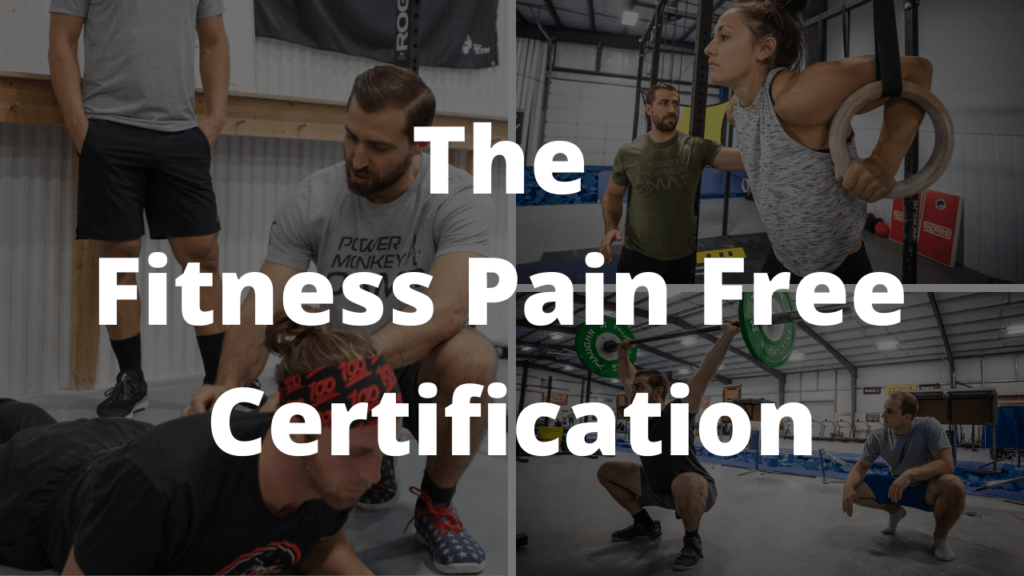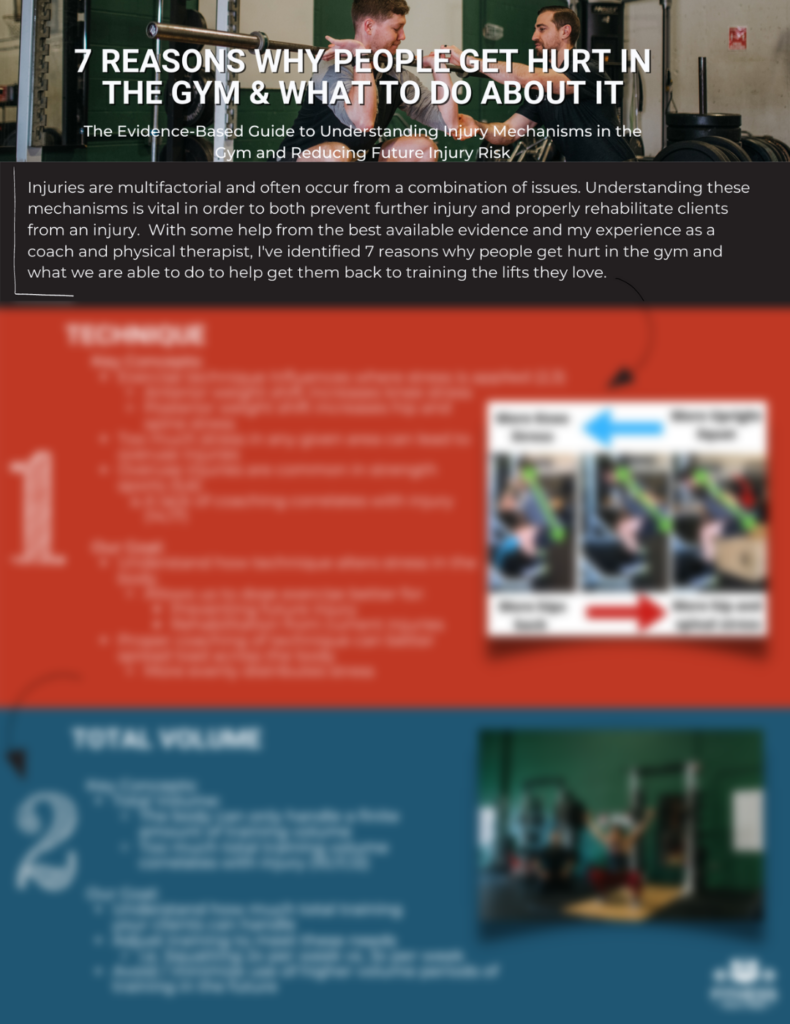Updated 9/10/21:
One of the most common injuries I see and work with on a regular basis is hip pain. Generally I’m working with people that have femoral acetabular impingement syndrome (FAIs). These folks generally complain of a painful pinching or “tightness” deep in the front of the hip. They usually experience this in the bottom of the squat or when performing sumo deadlifts.
One of the cardinal signs of femoral acetabular impingement as I discussed earlier is pain in the front of the hip during the squat. Now, one of the biggest mistakes I see when rehabilitating these pain problems is too much focus on the hip.
I see people stretching their hip flexors, working on hip internal rotation and stretching their hips with bands attached to their hips from all different angles.
The reason why this isn’t generally effective is because FAIs is a conditioning of TOO MUCH motion at the hip joint. We don’t really want to hit the hip with even more mobility as we run the risk of making the situation worse.
We actually want the opposite, or less motion at the hip joint. The way we do this is by moving more from the joints above and below the hip. Check out the video below to see what I’m talking about:
So if we don’t move well through the thoracic spine and ankle joint, we force increased stress on the hip. Often times a few simples cues are enough to get your athletes moving from the right areas (as we saw in the video above).
However, often times there are mobility restrictions in these areas that are hindering optimal motion. So if our cues are not helping these folks get into better positions we’ll have to check the ankles and t-spine to see if mobility issues are present. Check out the video below to see how I like to assess ankles:
If you want to check out some of my favorite ankle mobility exercises click HERE. Now that we’ve sorted out the ankle, the next step is assessing the thoracic spine:
Once an athlete has adequate ankle and thoracic spine mobility they can begin squatting with a technique that drive LESS hip flexion and subsequent impingement at the front of the hip. This way we’re working at getting to the true root cause of the issue as opposed to throwing random mobility at the hip that may actually worsen things.
The information I just went over is part of a much larger and more comprehensive program called “The Fitness Pain Free Certification”. In the program I go over exactly what to be on the lookout for to keep your athletes moving safely and efficiently in the gym and how to get them back to training after an injury. Learning how to write training programs for your athletes with all sorts of pain problems (knee, shoulder, lower back and hip) is a huge part of what you’ll learn in the certification as well.
To give you a taste and help further your knowledge I’ve made an entire mini course that you can check out right now for FREE. In the mini course we go over:
- Why We Need a Better System
- 7 Reasons Why Athletes Get Hurt in the Gym
- 4 Simple Steps For Getting Your Athletes Out of Pain and Optimizing For Long Term Success
I’ve even created a nice infographic to help you quickly and easily consume the most important information:
If you’re interested in learning more about how to rehab athletes in the gym and how to keep them safe for the long haul then signing up for the free mini course and infographic is the next logical step.
Click HERE to Sign Up for the FREE Fitness Pain Free Mini Course
All Kipped Out,
Dan Pope DPT, OCS, CSCS

